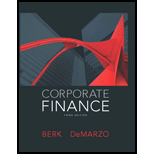
Concept explainers
Honda Motor Company is considering offering a $2000 rebate on its minivan, lowering the vehicle's price from $30,000 to $28,000. The marketing group estimates that this rebate will increase sales over the next year from 40,000 to 55,000 vehicles. Suppose Honda’s profit margin with the rebate is $6000 per vehicle. If the change in sales is the only consequence of this decision, what are its costs and benefits? Is it a good idea?
To determine: The cost and benefits.
Introduction:
While evaluating the firm’s decision, the benefits and incremental costs must be valued, as it is associated with the decisions. When the benefits exceed the cost, then it will be termed to be a good decision.
Answer to Problem 1P
The cost and benefits are $90 million and $80 million.
Explanation of Solution
Given information:
HM Company offers $2,000 rebate on its vehicle minivan. The price of the vehicle drops from $30,000 to $28,000. The sales could increase from $40,000 to $55,000 over the next year. The profit margin is $6,000 per vehicle.
The formula to calculate the benefits and cost of the firm:
Compute the benefits and cost of the firm:
Hence, the benefits are $90 million.
Hence, the costs are $80 million.
To discuss: Whether the idea is a good one.
Explanation of Solution
The benefits over costs are
Want to see more full solutions like this?
Chapter 3 Solutions
Corporate Finance
- A stock pays an annual dividend of $2 and has a required return of 8%. What is the stock's value assuming zero growth?A) $25B) $20C) $16D) $10 pleasw explarrow_forwardA stock pays an annual dividend of $2 and has a required return of 8%. What is the stock's value assuming zero growth?A) $25B) $20C) $16D) $10 please step by step wxplarrow_forwardA loan of $20,000 is to be repaid in 4 equal annual installments at 5% interest. What is the annual payment (rounded)?Explanation.arrow_forward
- A stock pays an annual dividend of $2 and has a required return of 8%. What is the stock's value assuming zero growth?A) $25B) $20C) $16D) $10 help me pleasearrow_forwardA stock pays an annual dividend of $2 and has a required return of 8%. What is the stock's value assuming zero growth?A) $25B) $20C) $16D) $10arrow_forwardA loan of $20,000 is to be repaid in 4 equal annual installments at 5% interest. What is the annual payment (rounded)?A) $5,000B) $5,681C) $5,641D) $6,000Solve pleasearrow_forward
- A loan of $20,000 is to be repaid in 4 equal annual installments at 5% interest. What is the annual payment (rounded)?A) $5,000B) $5,681C) $5,641D) $6,000need help!arrow_forwardIf you want $15,000 in 5 years and can earn 8% annually, how much must you invest now?A) $10,206.38B) $11,022.32C) $12,030.12D) $9,875.00arrow_forwardA loan of $20,000 is to be repaid in 4 equal annual installments at 5% interest. What is the annual payment (rounded)?A) $5,000B) $5,681C) $5,641D) $6,000arrow_forward
- If you want $15,000 in 5 years and can earn 8% annually, how much must you invest now?A) $10,206.38B) $11,022.32C) $12,030.12D) $9,875.00need helparrow_forwardA firm’s cost of equity is 12%, and its expected dividend next year is $1.20. If its stock sells for $15, what is the implied growth rate?A) 4%B) 3%C) 2%D) 1%arrow_forwardYou buy a stock for $40 and sell it a year later for $46 after receiving a $2 dividend. What is your total return?Help!arrow_forward
- Principles of Accounting Volume 2AccountingISBN:9781947172609Author:OpenStaxPublisher:OpenStax College

